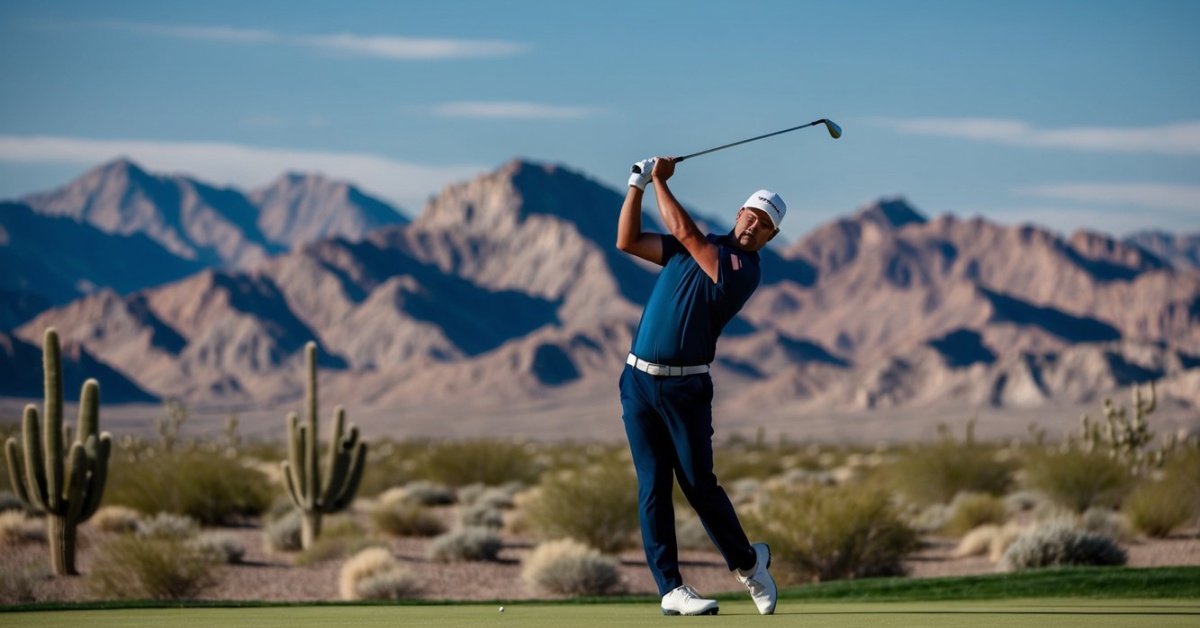Ever wondered if those pre-loved golf balls at the store could be a real score for your game? You’re not alone. Buying used golf balls can be a smart move, but it’s not without its ifs and buts.

In this article, you’ll discover the pros and cons of adding used golf balls to your bag. We’ll dive into cost savings, performance, and when it makes sense to go for that second-hand steal.
Stay tuned as we unpack the nitty-gritty of used golf balls and help you decide if they’re the hidden gem you’ve been looking for to up your golf game.
Pros of Buying Used Golf Balls
When you’re out on the course, it’s not just your skills that count, but also the quality of the equipment you use. And when it comes to golf balls, buying used can offer some significant advantages.
Cost-Effective Choice
Let’s talk numbers. New golf balls can be expensive, particularly if you prefer high-end brands. By choosing used golf balls, you’re looking at a fraction of the cost. This means you can potentially save hundreds of dollars over the course of a golfing season.
| Type | Average Cost Per Ball |
|---|---|
| Brand New | $4 to $6 |
| Lightly Used | $1 to $3 |
The savings don’t stop there. If you’re prone to losing a few balls to water hazards or the deep rough, the lower cost per ball reduces the sting of replacement.
Nearly New Performance
Many used golf balls are practically indistinguishable in performance from new ones. Balls that have been hit only once or twice often maintain their original playing characteristics. Playing a used ball that has a near-mint appearance will likely not affect your shot-making or scoring.
Eco-Friendly Option
Beyond the financial benefits, buying used golf balls is also an eco-conscious choice. It’s recycling in action. Instead of additional balls being manufactured, you’re reusing ones that are already in existence. This helps to reduce waste and is a small step you can take toward a sustainable golfing practice.
Try Premium Balls Without the Premium Price
Have you been eyeing those premium golf balls that professionals use but can’t justify the expense? Used golf balls give you the chance to play with high-quality models at a significantly reduced cost. You can experiment with different brands and types to find the perfect match for your game without breaking the bank.
« Which Golf Balls Are Best for High Handicappers? Unlock Your A-Game Now
Top Golf Ball Tracker: Unveil Your Best Shot or Waste of Money? »
By incorporating used golf balls into your game, you’re making a sensible decision that can enhance your playing experience. And who knows, you might just discover that these second-hand wonders are the secret ingredient to your next great round. Remember, it’s all about how you play the game, and the smart choices you make can lead to both improved performance and savings.
Cons of Buying Used Golf Balls
When you’re chasing pars and birdies, the quality of your golf ball can’t be overlooked. Used golf balls might be kind on your wallet, but some downsides are worth considering before you fill your bag.
Consistency can be a concern with used golf balls. As you’re aware, golf is a game of inches and playing with balls that have been through unknown conditions could throw your game off. During a round, you could be hitting a ball that’s seen one too many sand traps or another that’s taken a swim in the pond. The variance in their past lives means they might not perform with the uniformity you’d expect from new ones.
Next, comes wear and tear. Even though many used balls are marketed as ‘like new’ or ‘mint condition’, they’ve still been hit at least once, potentially compromising their integrity. For golfers wihout a high handicap, even micro scratches can affect trajectory and spin, elements of the game you meticulously fine-tune.
Testing different models is great but performance predictability is a must for serious golfers. You know your swing and how a new ball responds to it. A premium used ball, while cheaper, may not provide the same feel and response as a brand new one straight out of the box. You’ll also have to consider that model-specific advancements in golf ball technology could be absent in older, recycled balls.
Moreover, availability can be erratic. If you stumble upon a batch of used balls that suit your game perfectly, there’s no guarantee you’ll find the same type next time. This lack of consistent supply can be a nuisance, especially if you’re gearing up for a tournament and require balls that match your practice standards.
Overall, for golfers who play to lower their handicap, these factors can impact not just individual shots but entire games. While the cost-effectiveness of purchasing used golf balls stands, whether these trade-offs align with your golfing goals is a question only you can answer based on your priorities on the course.
Cost Savings
When you’re looking at trimming down your golf expenses, purchasing used golf balls can seem like a no-brainer. Brand-new golf balls can dent your wallet, especially if you admire those high-end tour models that come with a hefty price tag. Let’s face it, shelling out $4 to $5 per ball can add up quickly, especially when you’re playing rounds frequently.
Used golf balls can offer substantial cost savings, often selling for a fraction of the price of new ones. Depending on the grade and condition, you could save anywhere from 50% to 90% off the retail price. For instance, a dozen high-grade used balls might cost you around $10 to $20, compared to $48 or more for a fresh dozen.
| Condition | Savings Percentage | Approximate Cost per Dozen (USD) |
|---|---|---|
| High-grade used | 50% – 75% | $10 – $24 |
| Moderate-grade used | 75% – 90% | $6 – $14 |
While cost is an essential factor, so is your performance on the course. It’s crucial to weigh the price against what you’re potentially sacrificing in terms of consistency and reliability with your shots. After all, if you’re working on lowering your handicap, every shot counts.
If you frequently lose balls in the woods or water hazards, the cost-effectiveness of used balls becomes even more significant. Why watch your money sink to the bottom of a pond when a less expensive used ball could serve the same fate? This is particularly true for practice rounds or if you’re playing on a particularly challenging course known for claiming balls.
Remember, as you weigh the cost benefits, think about how often you play and the type of courses you frequent. These factors will help determine whether the trade-off in cost versus performance aligns with your golfing goals and budget. After all, it’s all about finding that sweet spot – in your swing and your spending.
Performance of Used Golf Balls
Have you ever stopped to consider how the performance of a golf ball is affected by its past life on the fairways? As a low handicapper, you’re acutely aware that the quality of your golf ball can be a big factor in your game.
Used balls can be classified into different grades based on their condition. It’s crucial to pick a grade that doesn’t compromise your performance. The highest quality used balls are often termed ‘mint condition’ and are typically indistinguishable from new. These balls have likely been hit only once before finding their way into water hazards or out of bounds. Balls with more visible signs of wear like scuffs or discoloration could be sold under classifications like ‘value’ or ‘practice’ quality.
- Mint Condition
- Hit once or twice
- No scuffs or major markings
- Value Grade
- Minor signs of wear
- Fairly reliable performance
- Practice Grade
- Visible wear and tear
- Best for informal practice
Field tests have shown that high-grade used balls perform almost identically to new ones in many respects. For example:
| Aspect | New Golf Ball Performance | High-Grade Used Ball Performance |
|---|---|---|
| Drive distance | 100% | 95-100% |
| Spin control | 100% | 95-100% |
| Feel and control | 100% | 95-98% |
These tests suggest that the differences in performance might be negligible for high-grade used balls. Yet, you know better than anyone that the mental aspect of the game is just as crucial. There’s a confidence that comes with lining up your shot, knowing you’ve got a ball that won’t let you down.
Consider how you feel standing on the tee. Will you think twice with a ball that’s already seen some action? It’s possible that even a small concern over the ball’s integrity could throw off your game. So, weigh the potential savings against that mental edge you need to compete at your level. After all, confidence in your equipment is key to maintaining your handicap.
When to Buy Used Golf Balls
As an avid golfer aiming to keep a low handicap, you’re always on the lookout for cost-effective ways to maintain your game. Buying used golf balls should come into play when you want to make your practice sessions more economical. Practice rounds are the perfect scenario – there’s no need to spend top dollar on new balls when you’re focusing on improving your swing and not the scorecard.
Consider used balls, too, if you’re playing a course with a lot of water hazards or rough areas where losing a ball is more likely. It’s financially wiser to hit a used ball into the unknown than a brand new one. You’ll reduce the sting of loss without significantly compromising your play.
Additionally, if you’re experimenting with different ball types to adjust your game, used balls offer a cost-effective approach to trial. You can test out various brands and models to find the perfect fit for your swing and playing style without the heavy commitment of purchasing new.
Another fitting time to opt for used balls is during the off-season, or when you’re getting back into the game after a break. Your game might be a bit rusty, and until you’re back in the swing of things, these balls can fill the gap. They allow you to rebuild your skills and confidence.
When transitioning to more challenging courses with harder layouts, used balls can also lessen the pressure. They give you the chance to play with a relaxed mindset, learning the ins and outs of the course without fretting over the potential loss or damage to your equipment.
Choosing to play with used golf balls doesn’t just save you money; it’s a strategic decision that supports various aspects of improving your game. Make sure to select high-grade used balls to ensure you’re not compromising on quality. And remember, when you’re gearing up for a tournament or any competitive play, that’s the time to bring out the best in your arsenal – preferably, fresh balls that you’ve practiced with and know inside and out.
Conclusion
Frequently Asked Questions
What are the benefits of buying used golf balls?
Buying used golf balls is cost-effective for practice rounds, playing on hazardous courses, experimenting with different ball types, and during the off-season or after a break. It’s a practical choice for many golfers.
When should I consider purchasing used golf balls?
Consider purchasing used golf balls for practice sessions, when playing on course layouts with high risk of ball loss, and when wanting to try out various ball models without a significant investment.
Are used golf balls suitable for all golfing situations?
No, used balls are not recommended for tournaments or competitive play. In situations where performance is critical, it’s best to use new golf balls to ensure optimal playability.
How do I ensure the quality of used golf balls?
Select high-grade used balls, often rated as mint or near-mint condition. These will have the least wear and provide performance closest to new balls, maintaining a high level of quality for your game.
Is it okay to use used golf balls after taking a break from golf?
Yes, using used golf balls is a good strategy when returning to golf after a break. It allows you to ease back into the game without the pressure of using expensive, new balls.










